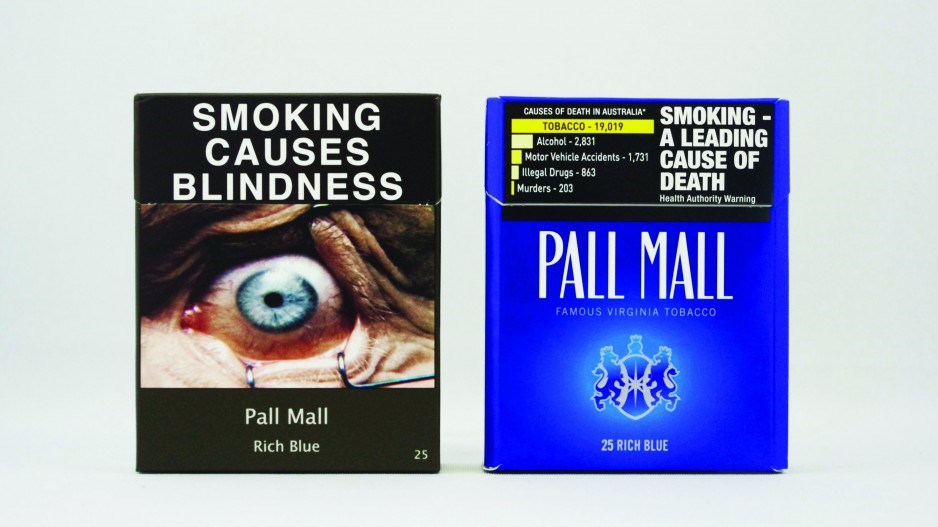New federal e-cigarette and cigarette packaging legislation could force tobacco companies in Canada to make major changes to their product lines and marketing.
Bill S-5, currently in the second reading in the House of Commons, would establish federal regulations for the production, sale, branding and marketing of e-cigarettes or “vaping” in Canada. It would also require that traditional cigarette packs adopt “plain packaging,” which removes all product branding and replaces it with large health disclaimers and plain text. Australia and the U.K. have instituted plain-packaging standards for cigarettes.
Imperial Tobacco Canada (ITC) supports vaping regulations because they open the door for entry into the vaping market. But Jorge Araya, ITC’s president and CEO, said the government should limit marketing restrictions on vaping products.
“[The bill] would make vaping legal in Canada, which I think is very good news. It addresses society’s expectations in terms of less harmful ways of consuming nicotine.”
But Araya took issue with plain-packaging rules.
“If the government is really serious about reducing tobacco consumption in Canada,… they have to be serious about facilitating safer ways of consuming nicotine.”
ITC is a subsidiary of international tobacco giant British American Tobacco (LON:BATS), whose cigarette brands include Dunhill, Kent and Lucky Strike.
In 2016, it reported revenue of £14.75 million ($24.3 million), a 12.6% increase from 2015, and sold 665 billion cigarettes. The burgeoning vaping market pales in comparison to the market for cigarettes. Euromonitor International estimated that vaping’s global market in 2015 was US$8 billion compared with US$700 billion for cigarettes.
Nonetheless, British American Tobacco invested US$1.5 billion over six years in developing next-generation products (NGP), which contain less nicotine than tobacco and are therefore potentially less harmful. The NGP lineup includes e-cigarettes and a new tobacco-heating product called i-glo, which was released this year in Vancouver. I-glo works by inserting a tobacco stick into an electric device that heats it up to create a vapour.
“The problem with cigarettes is not the nicotine,” said Araya. “The problem is the combustion. The combustion is what creates all the toxicants associated with smoking. This product has on average 90% less toxicants than a regular cigarette.”
Menn Biagtan, program manager at BC Lung Association, which administers the provincial QuitNow quit-smoking program, said removing branding from cigarettes will help reduce the attraction of smoking.
“In most of these legislations, the tobacco industry’s always in opposition to the health sector,” she said. “Being a non-profit organization [whose] mandate is to promote lung health, we have been really promoting tobacco reduction and tobacco control in British Columbia, [and] we really support this kind of bill.
“We support plain packaging because there are scientific evidences that show that people or youth are attracted to all these fancy names or branding, and even evidence from the tobacco industry that claims that one way to advertise and attract smokers is the use of these fancy labels or branding.”
Biagtan added that there’s still not enough evidence to show that vaping helps people quit smoking.
Bill S-5 is expected to win government approval by year’s end. Its new regulations for vaping and plain packaging could take effect in the marketplace by 2019. With marijuana legalization in Canada expected on July 1, 2018, Araya said there needs to be regulatory consistency in the government’s treatment of marijuana and tobacco.
On one side, he said, the federal government “wants to restrict more tobacco [and] to basically make tobacco invisible. And they are doing the exact opposite with marijuana because they understood that prohibition is not a solution, hiding the product, having high levels of taxation, etc. So, the only thing we ask and the only thing that we comment to the government is consistency. You can’t have two laws treating these sorts of products in different ways.”
Biagtan agreed. She said tobacco and marijuana products need to be strictly regulated.
@BIVnews




